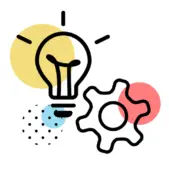Animation is no longer just for entertainment—it’s a powerful tool in a UX designer’s toolkit. In a digital-first world, functional UI animation helps users better understand interactions, reduces friction, and guides behavior across websites, applications, and devices.
Used thoughtfully, animation can simplify complexity, enrich user feedback, and create more memorable experiences. But to be effective, animation must be purposeful, accessible, performant, and contextually relevant. Below are current best practices for using animation to elevate your user experience.

Functional UI Animation Best Practices
Animation has immense potential to facilitate tutorial-style interactions with users. However, it is also easy to overdo it. If everything on the page is moving, your users will probably feel lost and confused.
The key to successfully deploying functional UI animation is identifying where it is most useful. Considering these best practices, you can get the most out of animated design elements without causing clutter and overwhelm.
1. Use Animation to Manage UX Friction
Functional animation helps smooth out interactions that might otherwise feel abrupt, confusing, or overwhelming. For instance, breaking up long forms with progressive reveal animations or adding a micro-interaction to confirm a successful action (like a saved item or form submission) can make the experience more intuitive and satisfying.
Animation can also strategically add helpful friction. Guiding users through a desired flow—such as a signup or checkout process—can boost clarity and conversions.
2. Support Interaction Design with Subtle Motion
Animation works best when it reinforces user intent. For example:
- A dropdown menu that smoothly opens when clicked
- Auto-filled contact suggestions sliding into view
- A loading indicator morphing into a success state
These cues reinforce cause and effect, enhance responsiveness, and bring interfaces to life—without overwhelming the user.
3. Design With Performance in Mind
Animations must be performant, especially on mobile devices and in global markets where lower-end hardware or limited bandwidth is common. To avoid frustrating delays:
- Use lightweight animation libraries like Lottie
- Optimize for hardware acceleration with GPU-friendly properties (e.g., transform and opacity)
- Avoid simultaneous animations that compete for resources
- Defer non-critical animations with lazy-loading strategies
Keep animation logic decoupled from core UI functions, ensuring interaction is immediate even if motion is delayed.
4. Respect Accessibility Preferences
Inclusive design requires accommodating users who are sensitive to motion. Motion sickness, ADHD, and vestibular disorders are common reasons some users disable animations.
- Support the
prefers-reduced-motionmedia query - Avoid abrupt flashing or jittery transitions
- Let users disable or customize animations where appropriate
Accessible animation doesn’t mean no animation—it means intentional, adjustable, and respectful motion.

5. Make Animations Contextual and Adaptive
In modern digital experiences, animations don’t need to be static. Leverage behavioral data, AI tools, or product context to tailor motion:
- Use engagement patterns to adjust onboarding animations dynamically
- Trigger subtle nudges based on inactivity or drop-off risk
- Personalize microinteractions based on user preferences or roles
Adaptive animation enhances relevance without creating clutter, making the interface feel more intelligent and responsive.
6. Keep Animations Relevant to Function
Animations should never distract or compete with the task at hand. While motion can add “wow” factor, its primary role is functional: guiding attention, reinforcing system status, and providing emotional feedback.
Consider:
- What does the user need to understand at this moment?
- Can motion reduce ambiguity or encourage the next step?
- Does it align with your brand’s tone and the user’s cultural expectations?
Use motion as a storytelling tool—but keep the story focused.
7. Use Appropriate Timing and Easing
Timing is crucial. Animations that are too slow feel sluggish, while overly fast ones appear abrupt or even invisible.
Here’s a quick reference for common motion durations:
- Micro-interactions (e.g., hover, fade): 100–200ms
- UI transitions (e.g., menu reveals, modal pop-ups): 200–400ms
- Full-screen transitions: 400–500ms
Use easing curves (e.g., ease-in-out) to make motion feel organic. Don’t forget to test timings across devices and screen sizes—what feels smooth on desktop may feel laggy on mobile.
Tools for Implementing Modern UI Animation
Designers and developers can bring motion to life using modern tools and workflows:
- Lottie: Lightweight JSON-based animations for web and mobile
- Framer Motion: A React animation library for dynamic, state-driven UI
- After Effects + Bodymovin: For exporting animations to Lottie format
- Figma + Smart Animate: For prototyping transitions directly in design files
Building animations into design systems with tokens and guidelines helps ensure consistency and reusability across platforms.
Elevate Your UX With Thoughtful Animation
Motion draws attention—and with it, responsibility. Done right, UI animation not only delights but informs, guides, and simplifies. It’s a bridge between interface and human understanding.
Functional UI animation is no longer a “nice to have”—it’s a critical UX tool for engaging users, streamlining interactions, and reinforcing brand identity.
At UpTop, our UX experts are dedicated to crafting exceptional digital experiences. We partner with you to optimize your products for user satisfaction and profitability, guiding you through user research, UX strategy, design, and development. Ready to gain a competitive edge with innovative UX design? Let’s connect.


